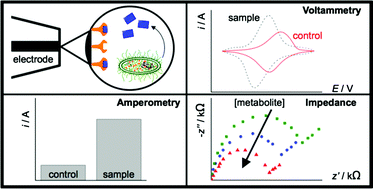Fundamentals, achievements and challenges in the electrochemical sensing of pathogens
Abstract
Electrochemical sensors are powerful tools widely used in industrial, environmental and medical applications. The versatility of electrochemical methods allows for the investigation of chemical composition in real time and in situ. Electrochemical detection of specific biological molecules is a powerful means for detecting disease-related markers. In the last 10 years, highly-sensitive and specific methods have been developed to detect waterborne and foodborne pathogens. In this review, we classify the different electrochemical techniques used for the qualitative and quantitative detection of pathogens. The robustness of electrochemical methods allows for accurate detection even in heterogeneous and impure samples. We present a fundamental description of the three major electrochemical sensing methods used in the detection of pathogens and the advantages and disadvantages of each of these methods. In each section, we highlight recent breakthroughs, including the utilisation of microfluidics, immunomagnetic separation and multiplexing for the detection of multiple pathogens in a single device. We also include recent studies describing new strategies for the design of future immunosensing systems and protocols. The high sensitivity and selectivity, together with the portability and the cost-effectiveness of the instrumentation, enhances the demand for further development in the electrochemical detection of microbes.


 Please wait while we load your content...
Please wait while we load your content...